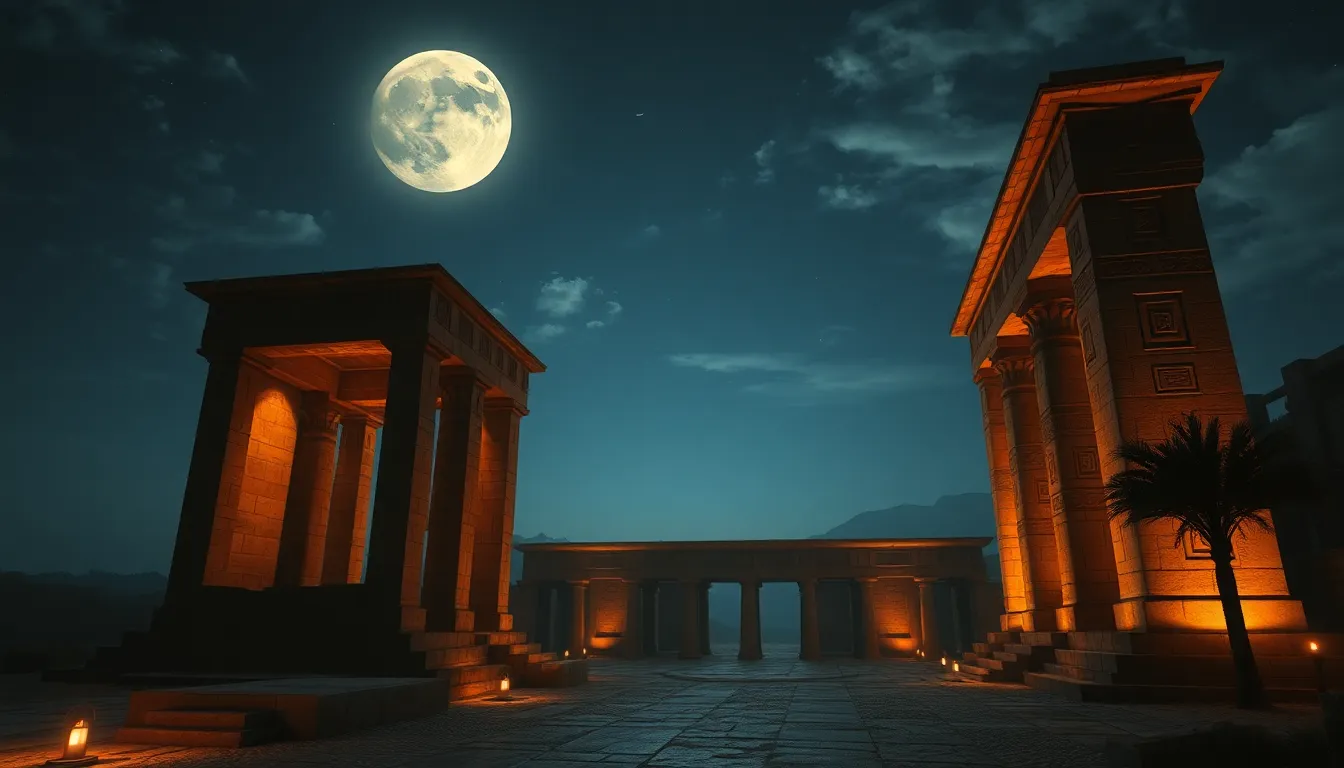The Moonlit Temples: Sacred Spaces in Ancient Egypt
I. Introduction
Ancient Egyptian spirituality was deeply intertwined with the natural world, and architecture played a crucial role in the expression of this belief system. Temples were not merely buildings but sacred spaces that served as gateways to the divine. They were the centers of worship, community, and culture, allowing the ancient Egyptians to connect with their gods and the cosmos.
The moon held a particularly significant place in Egyptian mythology, symbolizing change, mystery, and time. Its cycles were observed closely, influencing religious practices, agricultural activities, and the overall rhythm of life in ancient Egypt.
II. The Role of Temples in Ancient Egyptian Society
Temples in ancient Egypt served multiple purposes that extended far beyond spiritual practices:
- Centers of Worship: Temples were the focal points for religious ceremonies, where priests conducted rituals to honor the gods.
- Community Gathering: They acted as social hubs where people came together for festivals, celebrations, and communal activities.
- Economic and Political Functions: Many temples controlled vast tracts of land and resources, making them key players in the local economy.
- Repositories of Knowledge: Temples housed libraries and archives, preserving texts that documented everything from religious rites to astronomical observations.
III. Architectural Features of Moonlit Temples
The architecture of moonlit temples was designed with specific features that highlighted lunar illumination:
- Strategic Orientation: Many temples were aligned to capture the moonlight during key celestial events, enhancing the spiritual experience.
- Open Courtyards: These areas allowed for the moonlight to flood the space, creating a mystical atmosphere during nighttime rituals.
- Symbolism of Light and Darkness: The interplay of light and shadow in temple design reflected the duality of existence, representing life and death, creation and destruction.
Notable examples of moonlit temple structures include the Temple of Karnak and the Temple of Hatshepsut, both showcasing the Egyptians’ mastery of architectural alignment with celestial bodies.
IV. Lunar Deities and Their Temples
In Egyptian mythology, several key deities were associated with the moon:
- Khonsu: The god of the moon, often depicted as a young man with a sidelock of youth and a lunar disk.
- Thoth: The god of wisdom and writing, frequently associated with the moon and known for his role in maintaining the universe.
Temples dedicated to lunar worship, such as the Temple of Khonsu at Karnak, were sites of elaborate rituals conducted under the moonlight. These ceremonies often included offerings, music, and dance, aimed at invoking the favor of the lunar deities.
V. The Connection Between the Moon and the Nile
The lunar cycle played a pivotal role in the agricultural calendar of ancient Egypt, particularly regarding the Nile’s annual flooding:
- Lunar Cycle and Flooding: The phases of the moon were believed to influence the timing and predictability of the Nile’s inundation, which was crucial for farming.
- Water and Fertility: The ancient Egyptians saw a symbolic relationship between the moon, the waters of the Nile, and the fertility of the land.
- Temples and Agricultural Rituals: Temples often hosted rituals that coincided with lunar events to ensure bountiful harvests and divine favor on crops.
VI. Archaeological Discoveries and Insights
Recent archaeological discoveries have shed new light on the significance of moonlit temples in ancient Egypt:
- New Findings: Excavations have revealed previously uncharted temple sites that align with lunar cycles.
- Artifacts and Inscriptions: Researchers have uncovered inscriptions that detail rituals and beliefs surrounding lunar worship.
- Impact of Modern Archaeology: Advances in technology, such as satellite imagery and ground-penetrating radar, have enhanced our understanding of temple layouts and their celestial alignments.
VII. Cultural Legacy of Moonlit Temples
The influence of moonlit temples extends far beyond ancient Egypt:
- Later Civilizations: The architectural and spiritual concepts were adopted and adapted by subsequent cultures, including the Greeks and Romans.
- Representation in Art: Moonlit temples have been depicted in various forms of art and literature, symbolizing mystery and spirituality.
- Preservation Efforts: Modern initiatives focus on restoring and preserving ancient temple sites to maintain their historical and cultural significance.
VIII. Conclusion
Moonlit temples in ancient Egypt were not just places of worship; they were embodiments of the Egyptians’ complex relationship with the cosmos and their deities. These sacred spaces served as the heart of spiritual, cultural, and social life, reflecting the profound impact of lunar cycles on their civilization.
The enduring mysteries of these temples continue to captivate scholars and enthusiasts alike, highlighting the importance of ongoing research and preservation efforts. By understanding the significance of moonlit temples, we gain deeper insights into the rich tapestry of ancient Egyptian culture and spirituality.




